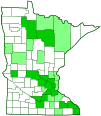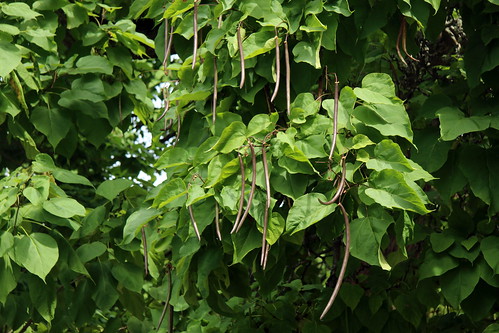northern catalpa
(Catalpa speciosa)
Conservation • Wetland • Description • Habitat • Ecology • Use • Distribution • Taxonomy
Description |
Northern catalpa is a medium-sized, moderately fast-growing, moderately short-lived, deciduous tree rising on a single trunk from a relatively shallow, spreading root system. It can be The trunk is relatively stout and usually somewhat crooked but may be straight. The crown is irregular. The bark on mature trees is reddish-brown, rough, and divided into shallow, irregular furrows and vertical ridges with thick scaly plates. Young twigs are stout, green, and hairless with scattered white dots (lenticels). Older twigs are reddish-brown. The pith is continuous. The leaf scars are round or shield-shaped and distinctly raised but depressed in the center like a suction cup. They have numerous bundle scars forming an oval. There are no terminal buds. Lateral buds are small and are covered with dark brown to black scales. The leaves are deciduous and are arranged in whorls of three. They hang downward on The flowers are bisexual, having both male and female parts. They appear when the leaves are fully grown in May to June. The inflorescence is large, showy, 5″ to 10″ long and wide, branched cluster (panicle) of 10 to 30 flowers at the tips of branches. Individual flowers are more or less bell shaped, 2″ to 2½″ long, 1½″ to 2″ wide, and bilaterally symmetrical. There are 5 sepals, 5 petals, 2 fertile stamens, 3 infertile staminodes, and 1 style. The sepals (calyx) are fused together into a ⅜″ to ½″ long tube. The calyx is hairless and tinged with purple. It splits open deeply at maturity into 2 irregular lobes. The petals are fused at the base into a tube about 1⅜″ long, then separated into 5 unequal lobes. The lowest lobe is shallowly notched. The petals are bright white with two yellow to orange patches and several brownish-purple dots and lines at the throat. The staminodes are short. The stamens are long but do not protrude from the corolla tube. The style is white with a 2-lobed stigma. The flowers are fragrant but inhaling their aroma may be poisonous to some individuals. The fruit is an 8″ to 16″ long, ⅜″ to ⅝″ in diameter, bean-like seedpod containing numerous seeds. The seedpod is narrowly cylindrical, round in cross section, and relatively thick-walled. It is light green at first, turning brown at maturity. The seeds are flat, light brown, 5 ⁄16″ to ⅝″ long, and ⅛″ to ¼″ wide. They have a papery wing and a tuft of long hairs at each end. After the seeds are released the sides of the seedpod (valves) remain concave. The seedpod ripens in the fall and remains on the tree, opening slowly and releasing seeds throughout the winter and spring. |
Height |
50″ to 80″ |
Record |
Records are not kept for non-native trees |
Flower Color |
White with yellow and purple markings |
Similar Species |
Chinese catalpa (Catalpa ovata) leaves are usually lobed or angled near the middle. The underside is hairless at maturity, sometimes hairy only along the veins when young. The flowers are much smaller, no more than 1″ long. The seedpods are relatively thin-walled. It has only been reported in Houston County. |
Habitat |
Moist but well-drained. Alluvial forests in south-central US. Full or partial sun. |
Ecology |
Flowering |
May to June |
Pests and Diseases |
Catalpa sphinx (Ceratomia catalpae) caterpillars can defoliate the tree. |
Use |
In the 1930s and 1940s northern catalpa was widely planted as a windbreak and cultivated for fence posts in Ohio. It is still sold and planted as a shade tree and ornamental because of its large leaves and showy flowers. |
Distribution |
||
|
Sources The map at left includes observations from iNaturalist and from sightings posted by visitors on MinnesotaSeasons.com. Both are in light green on the map. At least some of those sightings are in people’s yards, and one is in an arboretum. Those are not outside of cultivation. |
|
| 5/21/2023 | ||
Nativity |
||
Native to Missouri, Arkansas, Illinois, Indiana, Kentucky, Tennessee, and Texas. Introduced and cultivated farther north and west. Widely spreading. |
||
Occurrence |
||
Adventive and locally naturalized in Minnesota. Prior to European settlement the range of northern catalpa had contracted to a small area around the confluence of the Mississippi and Ohio Rivers. It has now become naturalized from Kansas to Virginia north to southern Michigan and southern Wisconsin. Its range continues to spread and now includes almost all states east of the Rocky Mountains. In Minnesota it is not fully established but is locally naturalized. It is hardy up to zone 4, which includes the southern half of the state. |
||
Taxonomy |
|
Kingdom |
|
Division |
Tracheophyta (Vascular Plants) |
Subdivision |
Spermatophytina (Seed Plants) |
Class |
Magnoliopsida (dicots) |
Order |
Lamiales (Mints, Plantains, Olives, and Allies) |
Family |
Bignoniaceae (bignonia) |
Tribe |
Catalpeae |
Genus |
Catalpa (catalpas) |
Subgenus |
Catalpa |
Subordinate Taxa |
|
|
|
Synonyms |
|
|
|
Common Names |
|
catawba cigartree Indian-bean northern catalpa western catalpa |
|
Glossary
Calyx
The group of outer floral leaves (sepals) below the petals, occasionally forming a tube.
Corolla
A collective name for all of the petals of a flower.
Lenticel
A corky, round or stripe-like, usually raised, pore-like opening in bark that allows for gas exchange.
Panicle
A pyramidal inflorescence with a main stem and branches. Flowers on the lower, longer branches mature earlier than those on the shorter, upper ones.
Petiole
On plants: The stalk of a leaf blade or a compound leaf that attaches it to the stem. On ants and wasps: The constricted first one or two segments of the rear part of the body.
Pinnately veined
With the veins arranged like the vanes of a feather; a single prominent midvein extending from the base to the tip and lateral veins originating from several points on each side.
Pith
The spongy cells in the center of the stem.
Sepal
An outer floral leaf, usually green but sometimes colored, at the base of a flower.
Stamen
The male reproductive organ of a flower consisting of an pollen-producing anther on a supporting filament.
Staminode
A modified stamen that produces no pollen. It often has no anther. Plural: staminodia.
Stigma
In plants, the portion of the female part of the flower that is receptive to pollen. In Lepidoptera, an area of specialized scent scales on the forewing of some skippers, hairstreaks, and moths. In Odonata, a thickened, dark or opaque cell near the tip of the wing on the leading edge.
Stipule
A small, leaf-like, scale-like, glandular, or rarely spiny appendage found at the base of a leaf stalk, usually occurring in pairs and usually dropping soon.
Visitor Photos |
||
Share your photo of this plant. |
||
This button not working for you? |
||
Amy O |
||
sapling growing by my back door. |
||
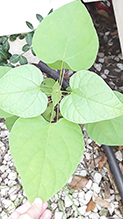 |
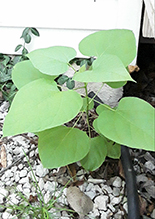 |
|
Jeremy W. |
 |
Randy |
||
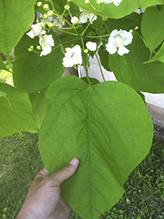 |
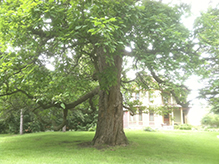 |
|
Northern Catalpa in Owatonna, MN |
||
|
||
Northern Catalpa. Freeborn County, MN, June 2017 |
|
|
MinnesotaSeasons.com Photos |
||
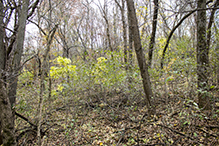 |
 |
|
Habitat |
Sapling |
|
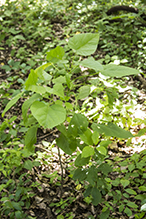 |
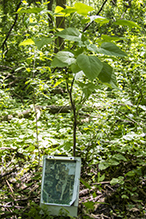 |
|
Sapling |
Sapling |
|
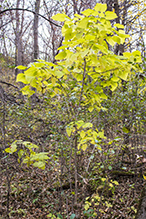 |
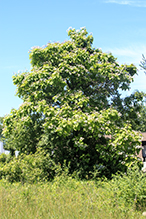 |
|
Sapling |
Mature tree |
|
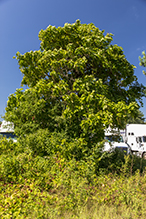 |
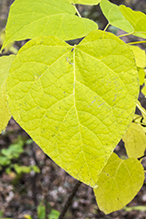 |
|
Mature tree |
Leaf |
|
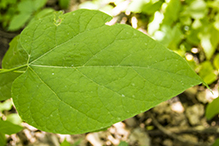 |
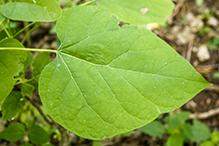 |
|
Leaf |
Leaf |
|
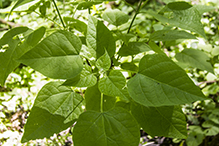 |
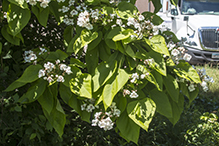 |
|
Leaf |
Flowering branch |
|
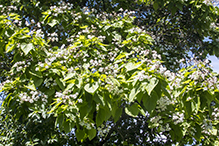 |
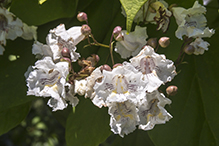 |
|
Flowering branch |
Inflorescence |
|
 |
||
Flower |
|
|
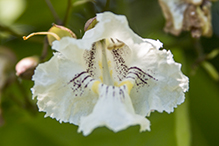 |
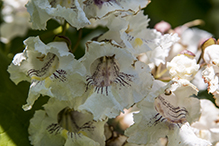 |
|
Flower |
Flower |
|
|
||
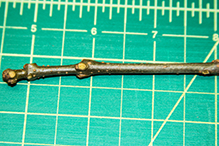 |
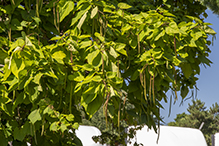 |
|
Twig |
Infructescence |
|
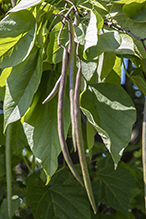 |
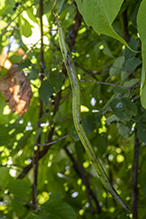 |
|
Fruit |
Fruit |
|
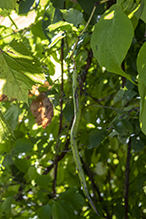 |
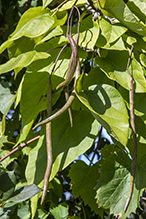 |
|
Fruit |
Fruit |
|

Visitor Videos |
||
Share your video of this plant. |
||
This button not working for you? |
||
|
Other Videos |
||
Trees with Don Leopold - northern catalpa |
About
Published on Nov 4, 2011 |
Northern Catalpa - Up and Coming Urban Species |
About
Published on May 9, 2013 Tom Rinzer, Landscape Architect for the University of Minnesota - Twin Cities, discusses uses and characteristics of northern catalpa (Catalpa speciosa). Unless otherwise noted, photos and videos are by Ross Meyer. Music by Dom Terrace. |
How to ID Catalpa speciosa |
About
Uploaded on Nov 19, 2008 Short video showing the key identifying characteristics for Catalpa speciosa |
Time lapse Catalpa |
About
Uploaded on Jun 30, 2008 This is a time lapse video showing spring growth of the Northern Catalpa (Indian Cigar tree, other names). These are 2 year old saplings. One photo was taken per day over approx one month. |

Visitor Sightings |
||
Report a sighting of this plant. |
||
This button not working for you? |
||
| Amy O 6/28/2019 |
Location: Indiana sapling growing by my back door. |
 |
| Jeremy W. 6/28/2019 |
Location: Golden Valley, MN - Hennepin County |
 |
| Randy June, 2017 |
Location: Freeborn County, MN |
 |
| Randy 8/9/2016 |
Location: Owatonna, MN |
 |
MinnesotaSeasons.com Sightings |
||

|
Created: 10/28/2015 Last Updated: © MinnesotaSeasons.com. All rights reserved. |
